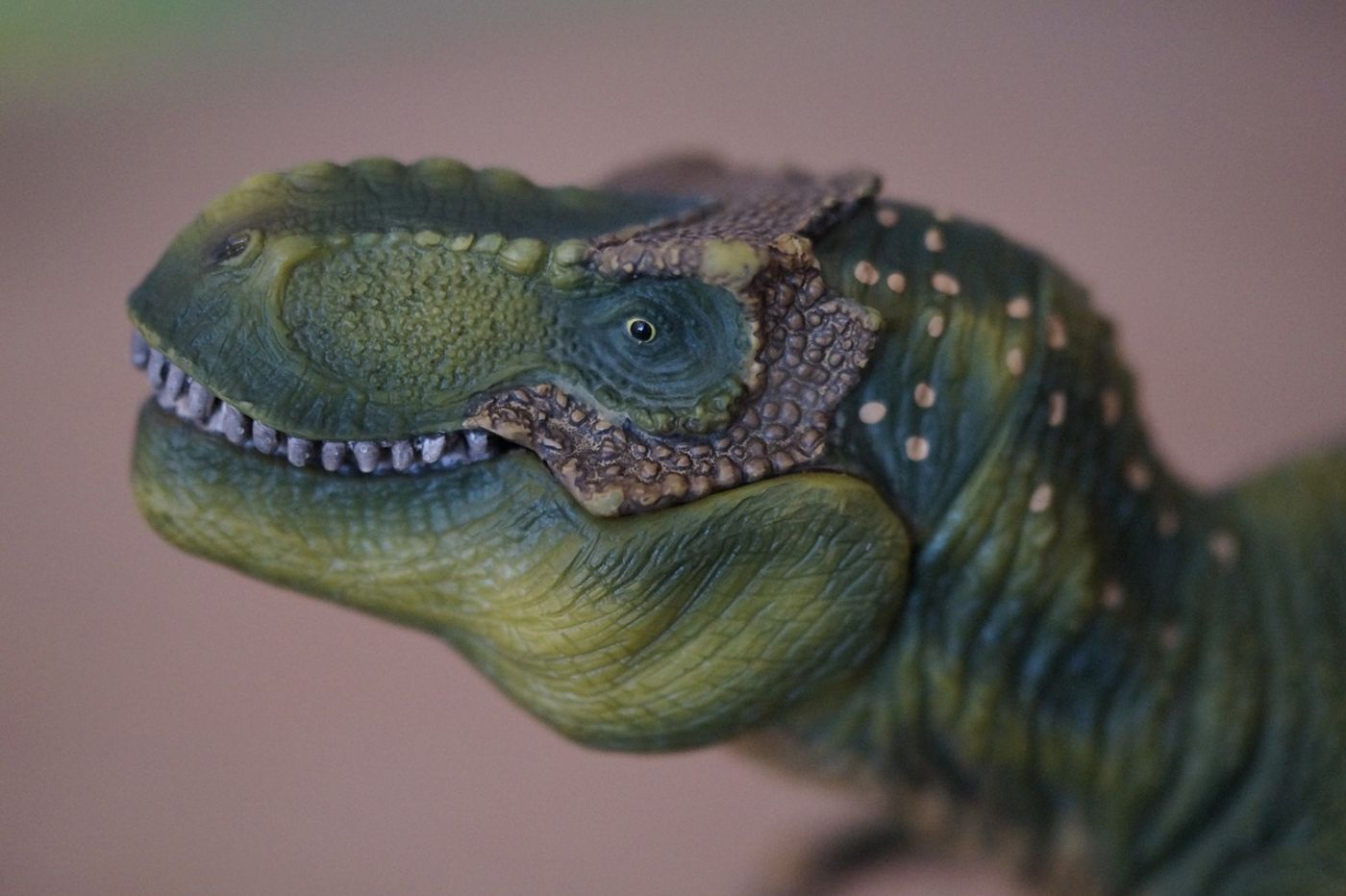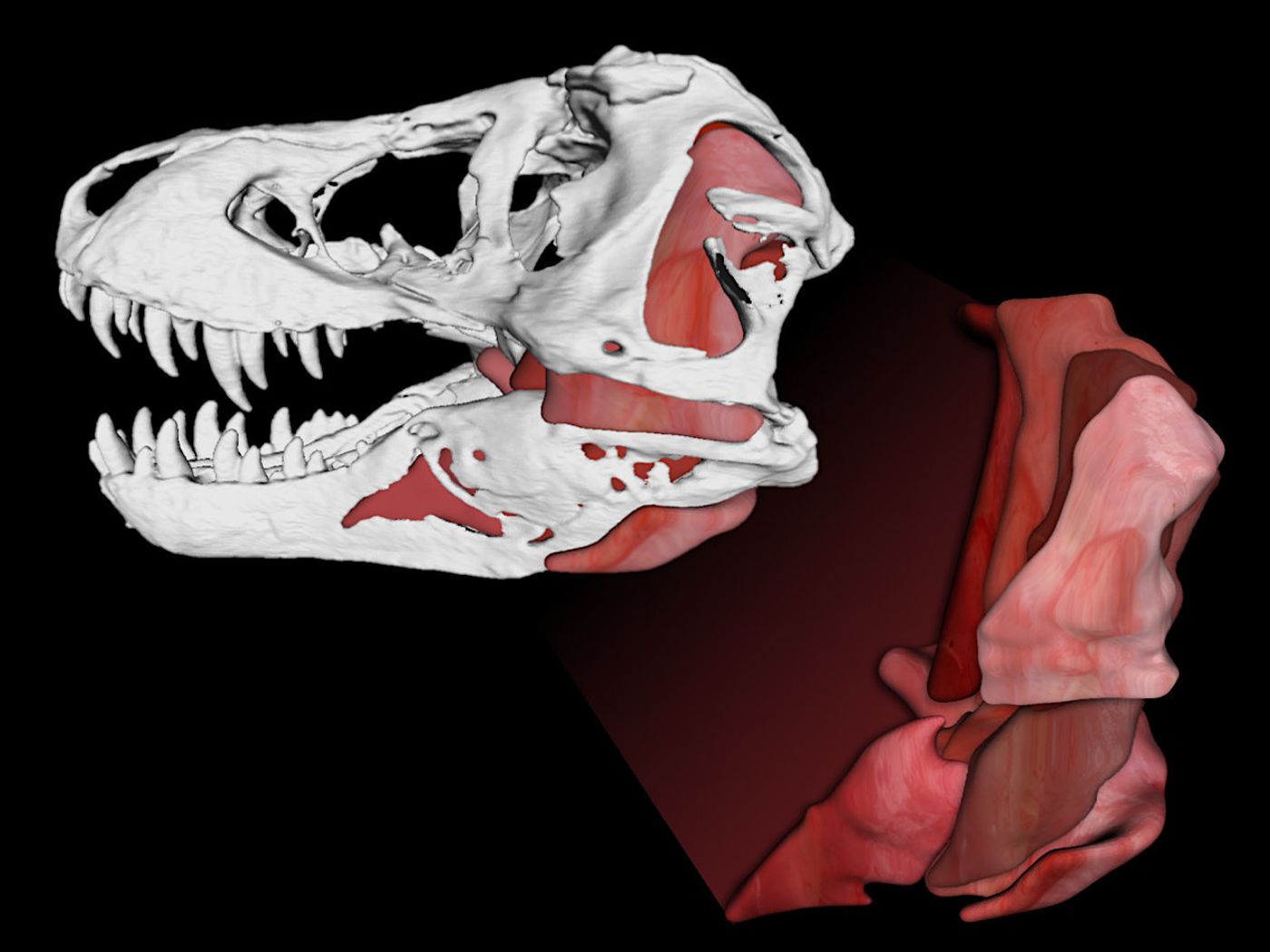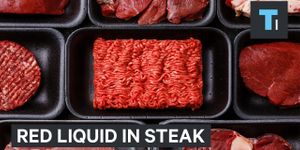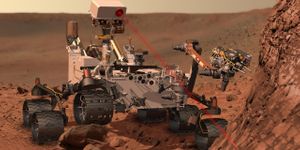How Hard Could a T-Rex Bite?
Scientists now think that the dinosaurs had feathered bodies rather than reptilian like the Jurassic Park movies made them out to be, but that doesn’t discredit their might, power, and size.
Although the Tyrannosaurus Rex may have been much more bird-like than previously depicted, it should still be revered as one of the time period’s most carnivorous creatures. To be able to tear other creatures’ limbs off, it needed a powerful bite, and with a mouth that big, it isn’t surprising that it probably had all the bite force it needed.
In a study published in the journal Scientific Reports, researchers have tried to calculate just how much bite force a T. Rex actually had by using the most accurate means possible with current technology.
Image Credit: Efraimstochter/Pixabay
Bite force is measured in pounds per square inch (PSI), which is the same unit of measure used to calculate air pressure in your car’s tires. This bite force pressure is usually measured with a compression gauge of some kind, which gets inserted into the creature’s mouth for them to bite down on.
The modern-day animal kingdom’s strongest bite force comes by way of the crocodile, which can exhibit anywhere from 3,700-5,000 PSI of bite force depending on the species. Given that the T-Rex probably had an even bigger mouth, researchers wanted to know how it might have compared.
Related: Why did the T. Rex have such puny arms?
Previous studies have placed the T. Rex’s bite force at somewhere around 12,800 PSI, but since the modeling technology has evolved quite a bite over the years and previous estimates were based more on speculation than anything else, it seemed proper to try and reproduce the results again. Interestingly, things were quite different this time around.
By using CT scans of T. Rex fossils, the researchers were able to generate three-dimensional computer models of the creatures’ massive jaws to determine just how much bite force they might have packed. To calibrate how much muscle density the computer-modeled T-Rex had, they used existing models of current crocodiles as the baseline.
Image Credit: Scientific Reports
It seemed to be a pretty good baseline and source for bite pressure data, especially considering the idea that crocodiles are the closest relative to the dinosaurs alive today.
The end result was that the computer-modeled T. Rex jaws exhibited a maximum bite force of about 8,000 PSI, which is notably much less than previous studies. Nevertheless, it’s still an insane number.
To make things even more impressive, all that power could be focused at the tips of the T. Rex’s sharp and pointy teeth, amplifying the pressure up to a staggering 431,342 PSI at the teeth. This meant a T. Rex could eat just about anything it wanted, and could crush almost anything with the incredible bite force it had.
Without a shadow of a doubt, the T. Rex was a vicious predator that could pick and choose any snack it wanted. Fortunately, they’re not around today to gobble us up, as these insane bite forces could even bite through the metal shells of cars.
Source: NPR










